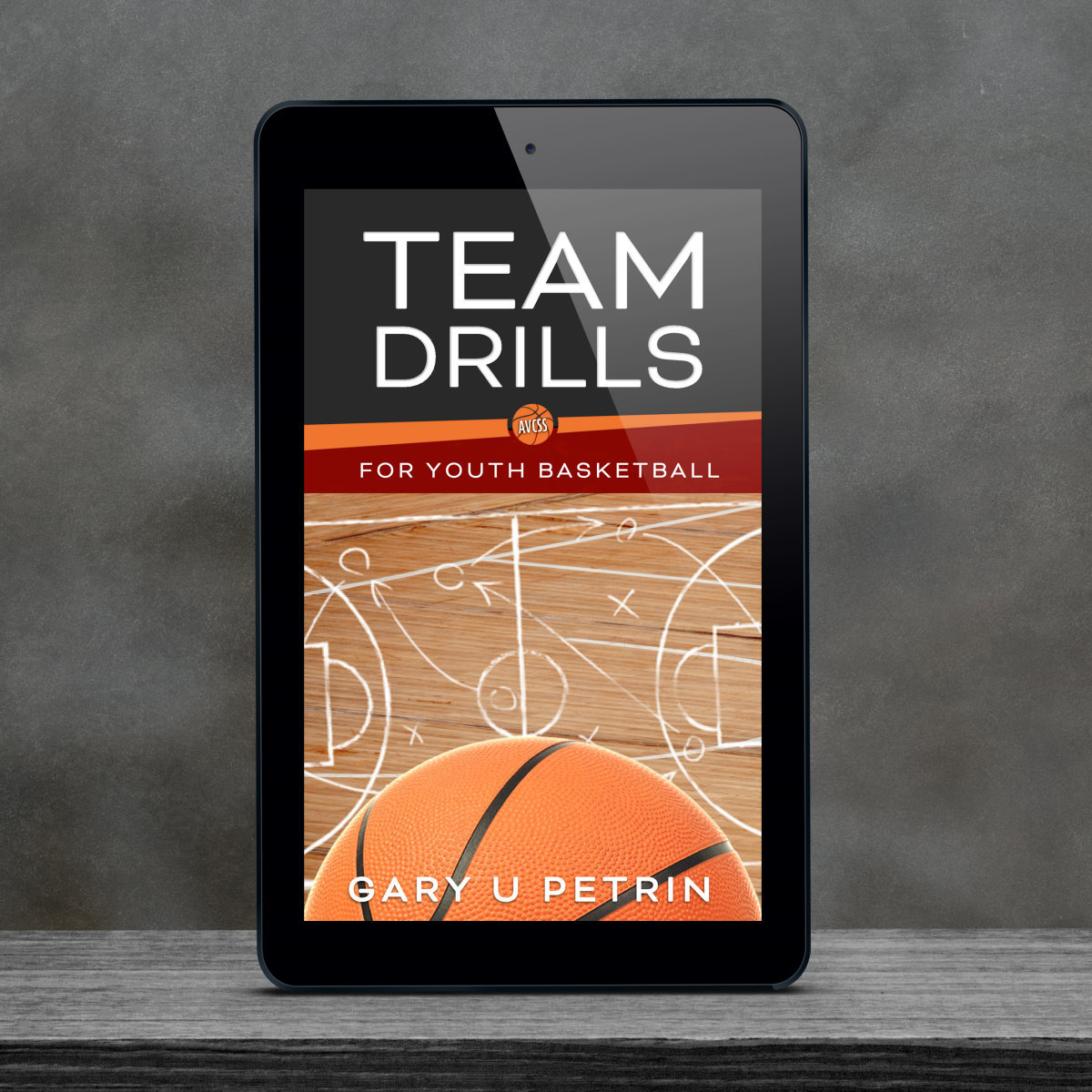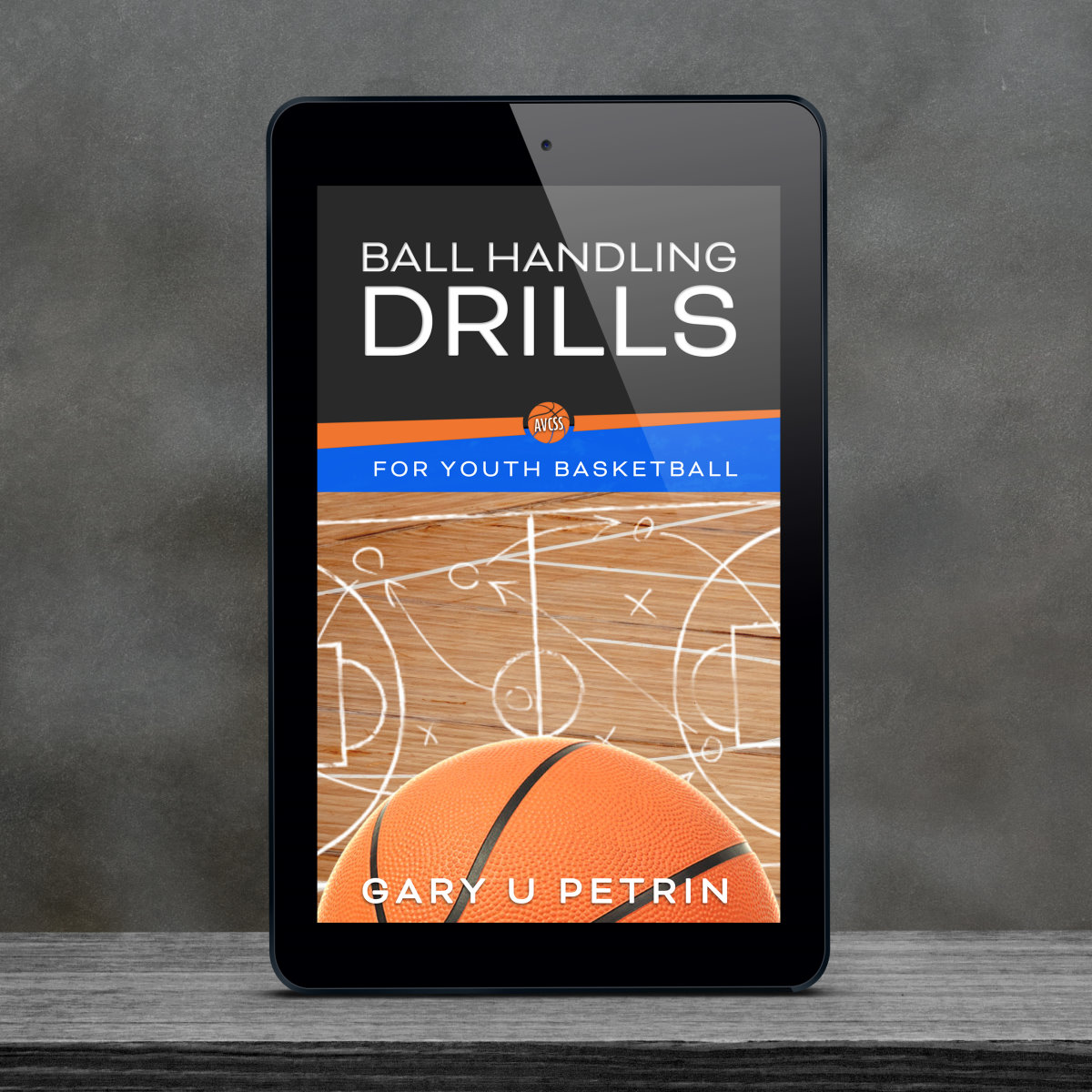Preparing a good Basketball Practice Plan
Having a Basketball Practice Plan is based upon how well you prepare for your youth basketball practices. It determines how productive your practices will be, but mostly can be the difference in how your team “competes” in the game. Winning cannot be guaranteed, but well planned and productive practices can be the difference in helping your team be competitive. It doesn’t matter if your team is extremely talented and you’re winning all of your games, or maybe your team hasn’t won a game yet? Coaches must always ensure they have prepared a Basketball Practice Plan for every practice. Make planning your basketball practices a high priority.
Planning your Practice / Basketball Practice Plan:
The very first thing you must do is “evaluate” the talent level on your team. Is your team big, small, fast, slow, weak ball handlers, poor shooters, poor passers, strong, weak, etc. It’s best to understand what you have up front so you can better prepare your practices. Obviously the younger teams will need more practice time for “fundamentals” and the older teams can spend more practice time conditioning and working on plays, but again, it just depends on the talent level of your team.
Planning and having a good basketball practice plan really depends on how much time you have to practice. A two hour practice is sufficient and will give you time to work on what is needed.
Sample basketball practice plan for younger players
1. Warm up running – I have the players jog 3-4 laps around the gym to warm up.
2. Stretching – Your practice plan needs to include time for stretching out. Whenever possible I would have my players show up 10 minutes early to warm up / stretch so the practice could start on time.
3. Ball Handling – We perform a ball handling routine which includes running suicides (while dribbling the basketball).
4. Shooting – Baseline shooting drill, Weave passing drill, or Weave 2 on 1 drill.
5. Run the 3 on 2, 2 on 1 fast break drill (a very important drill game like drill), then after the players are exhausted, they shoot 15 Free Throws.
6. Defensive drills
7. Defenses – work on defenses (2-3, 1-3-1, 3-2, presses)
8. Offenses – work on offenses
9. Scrimmage – (make time to scrimmage every practice)
Sample Practice Plan – Handout
* This is just a sample basketball practice plan but as you can see it pretty much covers running, conditioning, ball handling, shooting, passing, game like drills, defense, offense, and scrimmaging. Although a coach may spend a lot of time planning their practices, they may not always go the way it was planned. Keep in mind that it’s ok to spend a little more time on a certain drill or play if that’s what is needed to help the team. It’s great to learn new plays, but if the players can’t catch or pass consistently, what good will the play be during a game? Spend the most time on what will help the team develop their skills. In the long run this is what will help the team become successful.
Want more information on “Team Drills” – Check out our new download Basketball publication “Team Drills for Youth Basketball”
Packed with diagrams and video clips!
Basketball Practice Plan – Agenda Log
Sometimes it may be necessary to track how hard the players are working in practice!
If all your players are close in skill level, or you have players with discipline problems or don’t work hard in practice – you should keep track. Then if and when a parent walks up and asks why their child is not playing as much, you have the backup. Sounds a little much, but I can tell you that in certain situations (not all) tracking this type of information can save a lot of headaches…
Sample Practice Plan – Agenda Log – Handout
Suggestion for learning and practicing plays:
One of the best ways to learn plays quickly is to divide the team into two groups (and designate subs for each group so every player gets to participate).
Here’s how I usually teach plays:
1. All players on the baseline, I call out team “1” and demonstrate the play to this group (as the 2nd group is watching and paying attention to what I am saying).
2. Once this group runs the play and appears to understand it, I send them down to the other end of the court with the Assistant Coach and have them keep running the play.
3. I get team “2’ on the court and review the demonstration and work with this group until they understand it as well as the first group.
4. Just before a Tournament or Game, I have all the players at half court. I call out a play – “Team 1 go run Overload” then “Team 2 go run Box 2” and so on. I want to make sure that the plays are “fresh” in the players head before we go into the game. This is very helpful, especially for the younger players.
Use the method above or develop your own method to ensure that the time you spend on “plays” is productive.
The Practice – Keep it Flowing:
The #1 suggestion that should be considered is that your practice needs to start on time and always flow consistently. What I mean by “flow” is that it should be non-stop, drill after drill, play after play, until the end of practice (don’t give the players time to get distracted, and get the most out of your practice time). The only time the flow stops is when you give the players water breaks (and if you run your practice fast paced like this, they will need more water breaks).
Try these forms to assist you with drawing up plays, drills for your practices or games.
Blank Court Diagrams (6) – Handout
Full Court Blank Diagram – Handout
Role Call – Is it so important to take role?
The answer to this question (in my opinion) is yes! Why? Well it doesn’t take but 30 seconds to take roll, and the information could be useful. Who is committed to the team? Who deserves additional playing time? Players can’t work hard to help the team be successful if they are not attending practice consistently. And it isn’t fair to the players who show up to every practice, and don’t get to play as much as the players who don’t attend regularly.
Sample Role Call / Attendance Form – Handout
Meetings:
Meetings are a very important part of your practices and communication with your team, but if you have information to discuss – Do it either before or after your practice time. Don’t use valuable practice time to discuss uniform colors, what hotel the team is going to stay at, fundraisers, etc. Use your practice time to practice, hold meetings before or after practices (if at all possible).
Do you want the parents in the gym while you practice?
You don’t need any distractions during your practices, and you certainly do not need parents screaming instructions or trying to coach their child during water breaks. Lay down the rules right from the start. You must decide what your policy will be:
a) No parents in the gym while practice is going on – OR –
b) Parents are allowed in the gym but must adhere to the following rules: No shouting instructions to players, no instructing their child or other players during breaks, and pretty much remain quiet during the practice.
Just remember that if you do not lay down the rules from the very start – you may be spending valuable practice time on parents that are distracting during your practices. I always used b) above because I would use some of the parents for certain drills, etc. So sometimes the parents can be useful and assist at practices, but you will need to make sure you keep them under control.
Homework?
The younger players need lots of skill development, but there’s very little time. Although coaches work hard to increase the player’s skills in practice – the players need to work on their skills on non-practice days! My solution was to assign each player “homework” to ensure that they were touching a basketball during the week when the team was not practicing. Homework is not designed to interfere with school work, and should only take 20-30 minutes to complete. Some assignments were “generic” for all the players, but mostly the Homework assignments were “tailored” to each player’s skill level and development.
Some Homework examples are:
1. Ball-Handling drills
2. Push-ups
3. Watch 20 minutes of a basketball game, write a paragraph on what they learned.
4. Write a short report – on what they need to work on the most, etc.
5. Jumping, Defense drills, Catching, etc.
* During the winter months it is difficult for players to find a basket to shoot at so be careful what skills you assign.
Sample Homework Form – Handout
Common Mistakes – Practices
1. Not enough water breaks and/or allowing long breaks (don’t waste valuable practice time).
2. Spending large amounts of time on one player while the other players are just standing there. If needed take a few minutes after practice to help players that need more attention.
3. Spending large amounts of time on learning plays when your players need to be spending more time on the fundamentals. What good is the play if they don’t have the basic skills to run it in the game.
4. Only 6 players show up so you cancel practice – What a big mistake, there is always something you can do to increase these players skills. If there are players ready and willing to practice, take the time to work with them.
5. A parent wants to have a conversation right in the middle of the practice – be polite, and explain to them that you will be happy to talk to them after the practice is over (or before the next practice).
6. Communication – some coaches are in such a hurry to teach a play or drill, they don’t explain ‘Why” the play or drill is going to work, or what it will help with, or even where it would be used in the game.
Example: Don’t wait until there’s 1 minute left in the game to explain to your players that they need to “foul” to stop the clock (this should have been explained at one of your practices – in detail for the younger players). If you don’t explain this, and your players don’t foul, and you lose the game because of it, don’t be upset at the players… Take the time to explain and demonstrate the “Why’s” of the game.
Check out one of our many video clips on this website – Example Ball Handling Drill
Check out our new download basketball publication “Ball Handling Drills for Youth Basketball”
Get your Copy now! Good Luck!
Basketball Practice Plan
Info for Coaches and Team Managers Here
Need more ideas for Team Drills – Here you Go!



